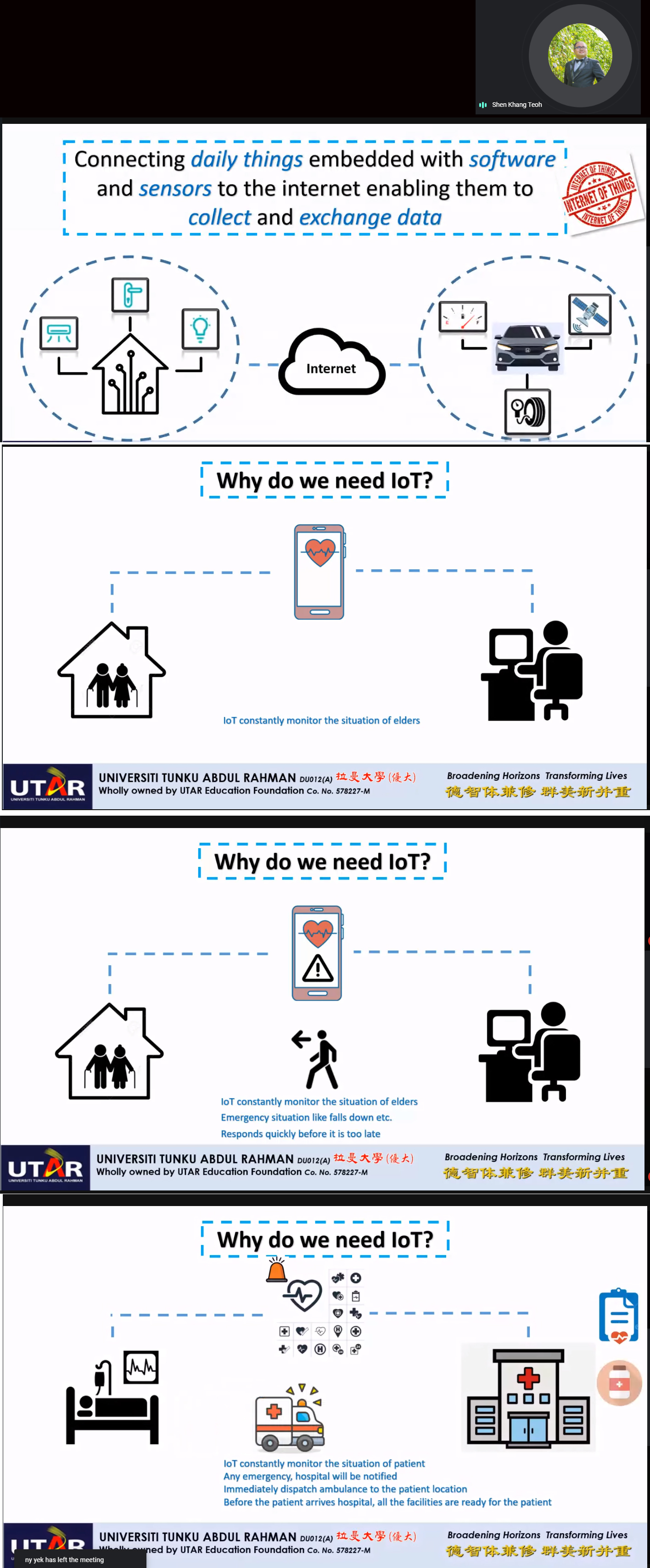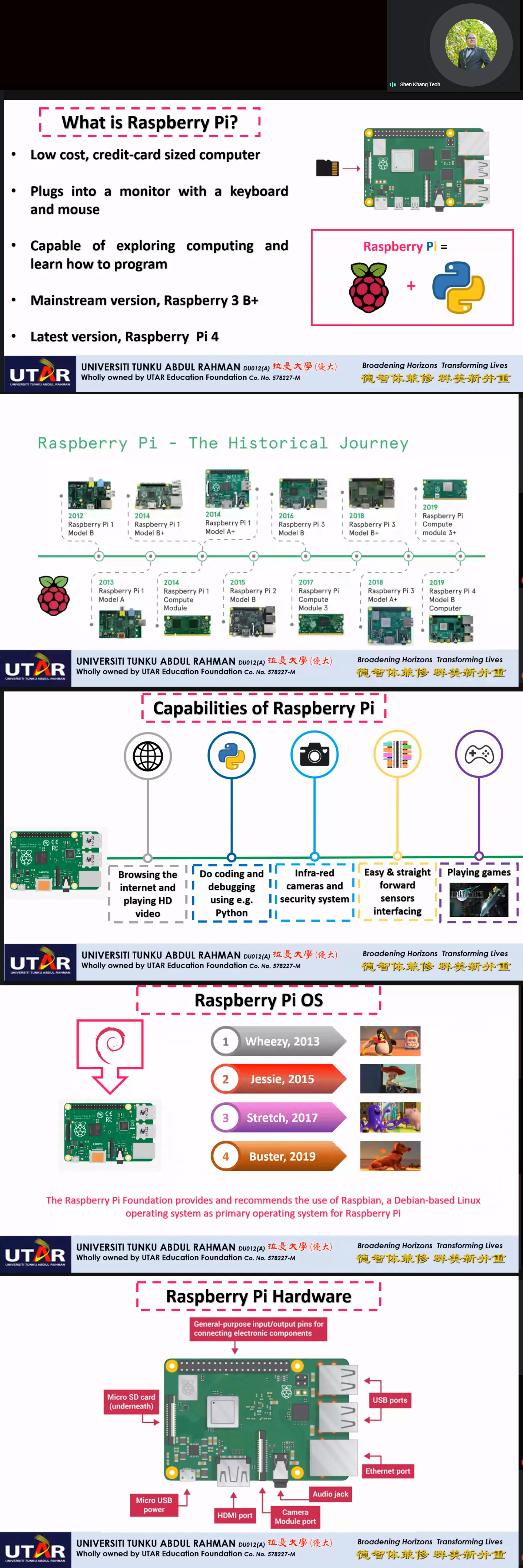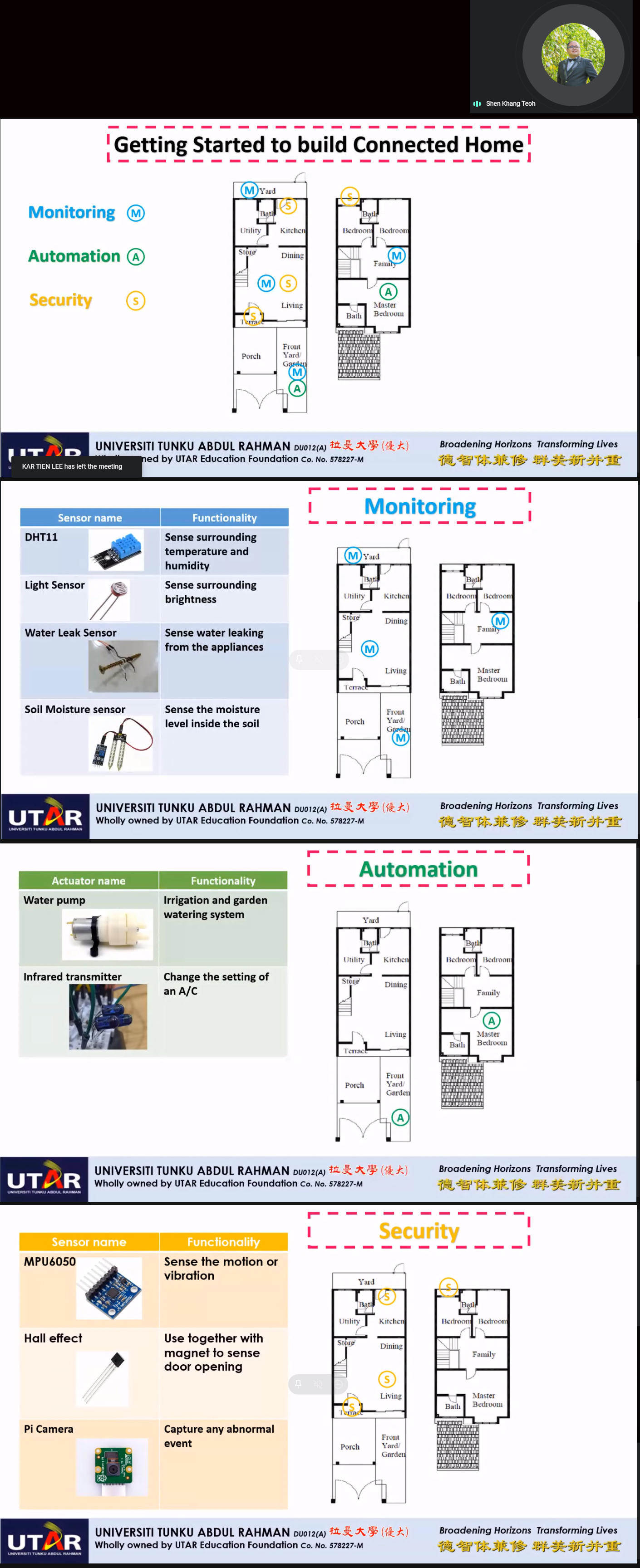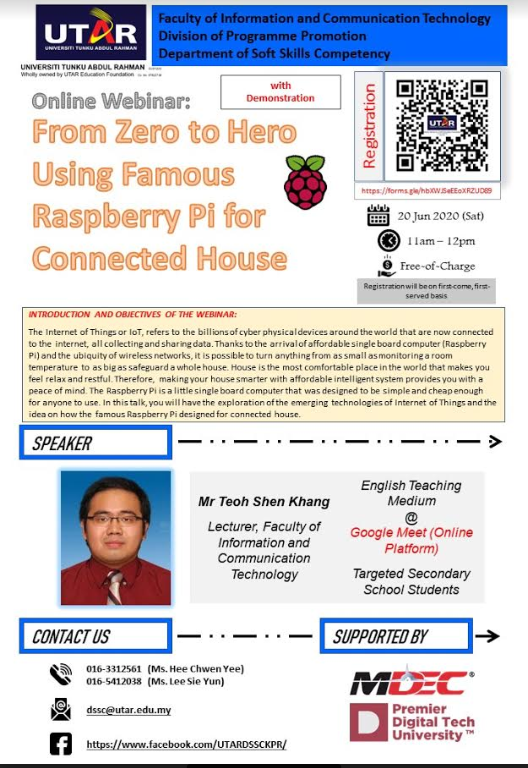
Getting started with Raspberry Pi
An online webinar titled “From Zero to Hero Using Famous Raspberry Pi for Connected House” organised by UTAR Faculty of Information and Communication Technology (FICT), in collaboration with Division of Programme Promotion (DPP) and Department of Soft Skills Competency (DSSC) was held on 20 June 2020, via Google Meet. Invited to deliver the talk was FICT lecturer Teoh Shen Khang.
The talk aimed to educate participants on how cyber-physical devices around the world are connected to the internet, especially in collecting and sharing data. Besides, the webinar also aimed to highlight the arrival of a single-board computer called Raspberry Pi and explore its advantages for a connected home.
“The Raspberry Pi is a low-cost, credit-card sized computer which is plugged into a monitor with a keyboard and a mouse. Raspberry Pi is capable of exploring the computing system and learning how to program. One can browse the internet using the Raspberry Pi as it supports high-definition (HD) video. Besides performing coding and acting as infrared camera and security system, it can also provide easy and straight forward sensor interface. One may use it to play games as well,” said Teoh.
Teoh then explained the IoT Architecture and categorised it into four layers, namely Application Layer, Data Processing Layer, Network Layer and Sensing Layer. He said a house with smart devices, connected to the internet, allows the home users to remotely monitor, control and secure the home appliances well.
Besides, he also listed the IoT drives that contribute to a connected home such as smart door lock, security system, smart air conditioner, lighting control system, energy management, appliance control, smart thermostat, smart bathroom appliance and garage door opener. Then he moved on to list the names of Raspberry Pi OS, namely Wheezy (2013), Jessie (2015), Stretch (2017), and Buster (2019). He emphasised that the Raspberry Pi Foundation provides and recommends the use of Raspbian, a Debian-based Linux operating system as the primary operating system for Raspberry Pi.
Teoh continued the session by explaining the three main things needed to build a connected home, which were “Monitoring”, “Automation” and “Security”. Apart from that, Teoh also explained the Telegram application; it is a cloud-based application that provides instant messaging and voice over IP services. With the bots launched in 2015, the Telegram became a popular application to communicate with Raspberry Pi.
“Computer Science is primarily concerned with computational theory, namely the architecture, data, algorithms and programming languages, while Computer Engineering takes that theory and applies it to real life,” he explained.
At the end of the session, Teoh displayed a few videos, showing how the Raspberry Pi works in a smart home environment. The webinar ended with a Q&A session. It attracted 183 participations and received a total of 193 views. For more information about Computer Engineering, please click this link: https://study.utar.edu.my/ct.php.

Teoh explaining the daily usage of internet and the importance of IoT in our lives

The IoT Architecture layers and how it drives connected home

The introduction to Raspberry Pi and its functions

Three main things needed to build a Connected Home

![]()
© 2020 UNIVERSITI TUNKU ABDUL RAHMAN DU012(A).
Wholly owned by UTAR Education Foundation Co. No. 578227-M LEGAL STATEMENT TERM OF USAGE PRIVACY NOTICE